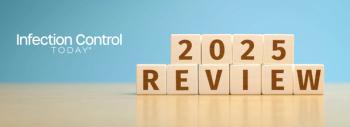
ASHES Reaffirms Practice Guidance for the Minimal Time for Proper Cleaning and Surface Disinfection of Patient Rooms
The American Society for Healthcare Environmental Services (ASHES) of the American Hospital Association (AHA) at its annual meeting reaffirmed previously published practice guidance for the minimal time for proper cleaning and surface disinfection of patient rooms.
The reaffirmation is due to wide variations in cleaning practices. Over the last several years the emergence of new microorganisms and the process for removing them from surfaces has required more time and attention, particularly to high-touch surfaces.
The following statements are taken from the American Society for Healthcare Environmental Services Practice Guidance for Healthcare Environmental Cleaning:
Cleaning an Occupied Patient Room
To ensure consistent quality of cleaning and adequate staffing resources for infection prevention, a total facility cleaning standard should be agreed upon in advance by environmental services, infection control and operations or administrative management.
By following all of the recommended practice steps, an occupied patient room clean will take approximately 25-30 minutes per room. Time is determined by the number of tasks and the time to perform each task in an efficacious manner.
Terminal Cleaning of the Patient Room (Discharges or Transfers)
To ensure consistent quality of terminal cleaning and adequate staffing resources for infection prevention, a total facility cleaning standard should be agreed upon in advance by environmental services, infection control and operations or administrative management.
By following all of the recommended practice steps, a terminal clean will take approximately 40-45 minutes per terminal clean. Time is determined by the number of tasks and the time to perform each task in an efficacious manner.
Specific guidance for cleaning and disinfecting can be found in the American Society for Healthcare Environmental Services Practice Guidance for Healthcare Environmental Cleaning. Time adjustments may be needed due to factors such as the size of the room, number of high touch surfaces and the amount of furniture in the patient room. If times require an adjustment, a detailed time and task study should be employed to ensure all areas receive proper cleaning and disinfection. The Infection Control committee should approve any deviations from recommended cleaning times based on the ASHES Practice Guidance manual.
ASHES Practice Guidance may be found at www.ashes.org/.
Newsletter
Stay prepared and protected with Infection Control Today's newsletter, delivering essential updates, best practices, and expert insights for infection preventionists.




